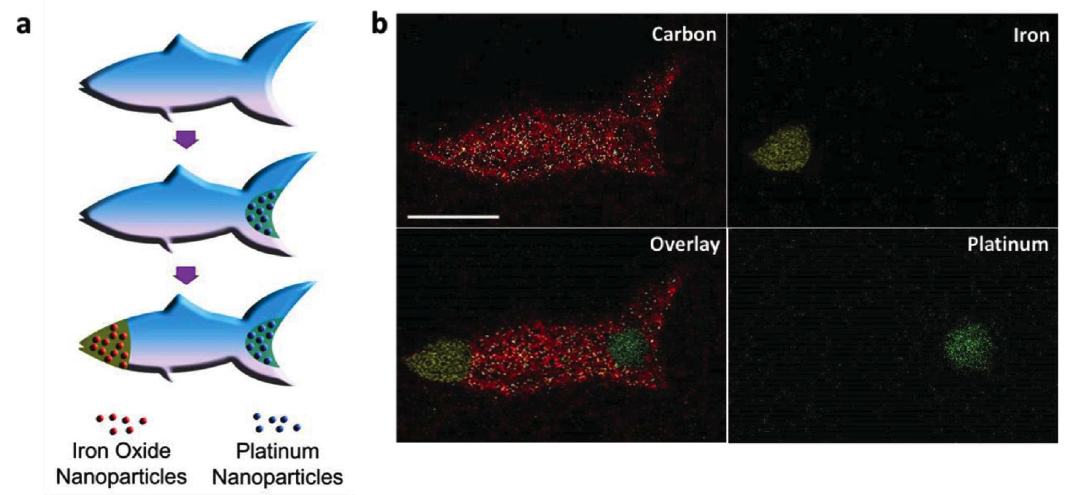In the exponentially vital industry of nano-engineering, 3D printing is now being utilized to make sure the inner workings of our bodies are running swimmingly. Two professors of nano-engineering from the University of California San Diego are utilizing advanced 3D printing technology to produce ‘microfish’, fish-shaped microrobotic devices geared towards traveling and delivering medicinal products to hard-to-reach places within the body.
The leaders of this project, Professors Shoachen Chen and Joseph Wang, recognized that most microrobots that have already been produced are unable to perform more advanced tasks due to their simply-shaped designs and inorganic physical make-ups. Thus, they manufactured the micro-fish, obviously inspired by the fluid, advanced motion that underwater creatures use to function in their liquid environments.
The microfish were manufactured with microscale continuous optical printing (μCOP), an advanced, high-resolution form of 3D printing that was created in Chen’s laboratory. The μCOP printer functions at a rapid pace, and is able to produce hundreds of their microfish within seconds of printing. What makes this printer so efficient is its digital micromirroring array device chip (DMD), containing millions of micromirrors that function separately from one another to cast the desired microfish design onto photosensitive material, which is then solidified once exposed to UV light.
This advanced process results in these 3D printed microfish, able to swim naturally through liquids, while being controlled magnetically and propelled by a hydrogen peroxide solution. The nanoengineering team was then able to modify the microfish body with various nanoparticles, using platinum in the tail section to interact with the hydrogen peroxide used to propel the fish forward, and iron oxide in the head section to allow for a magnetic steering system.
The microfish, which has the width of a single strand of human hair, will be able to serve as both a detoxification device and a toxin sensor too, and, hopefully, as a drug delivery system, as well. Chen and Wang have conducted demonstrations to show the great potential of combining 3D printing with nanoengineering, installing polydiacetylene (PDA) nanoparticles within the microfish. These PDA particles capture pore-forming toxins such as those found in bee venom. Chen and Wang successfully discovered that the strong swimming mechanisms of their microfish actually enhanced the ability to clear up toxins, and detoxification is easily monitored due to the red light that is emitted on the device when nanoparticles are introduced to the particular toxins.
This project offers boundless potential for the way that we locate and treat the toxins that deteriorate human health, helping medical professionals gather their diagnosis from swimming throughout the body with these microfish. 3D printing enthusiasts are oftentimes amazed by what the technology can offer our eyes, but it may be the 3D printed innovations that we can’t see that will truly end up shaping our society and healthcare system.






